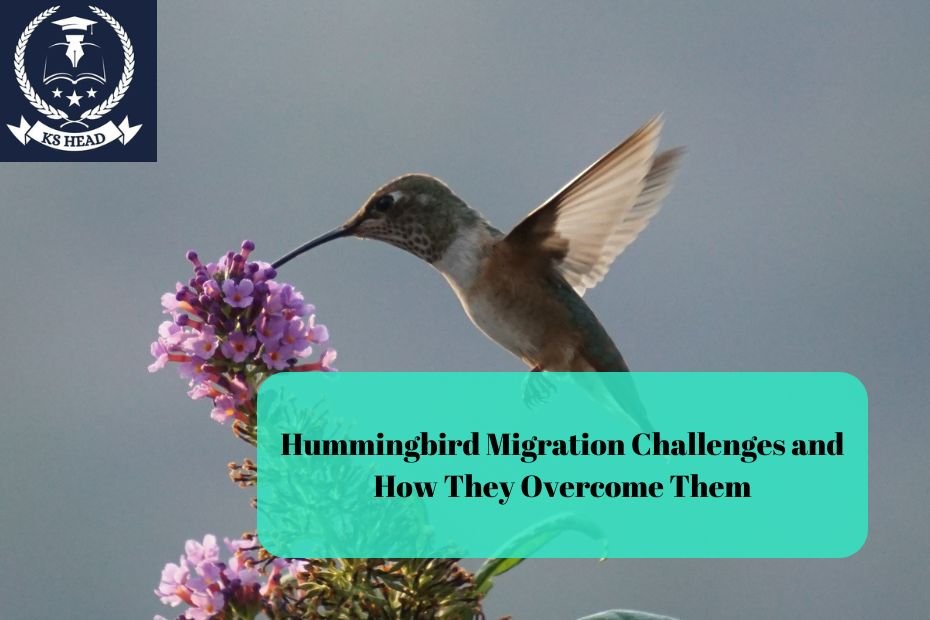Hummingbirds are remarkable creatures, known for their vibrant colors and incredible agility. Their migration patterns are among the most fascinating aspects of their behavior, showcasing their resilience and adaptability. However, the journey from their breeding grounds to wintering habitats presents various challenges. This article explores the significant challenges faced by hummingbirds during migration and how they overcome them, shedding light on their extraordinary lives.
1. Overview of Hummingbird Migration
The Migration Journey
Hummingbirds typically migrate between their breeding grounds in North America and their wintering habitats in Central and South America. This journey can span thousands of miles, depending on the species. The most common migratory species in North America is the Ruby-throated Hummingbird, which travels from Canada to Mexico.
Hummingbirds generally migrate alone rather than in flocks, making their journey all the more daunting. The migration process is crucial for their survival, as it allows them to access more abundant food sources and favorable climates.
Timing of Migration
The timing of hummingbird migration varies by species and geographical location. Most hummingbirds begin their migration in late summer or early fall, usually around August or September, and return north in the spring. The timing is influenced by factors such as food availability, weather conditions, and hormonal changes in response to the changing length of daylight.
2. Key Challenges Faced During Migration
2.1. Energy Management
Challenge:
One of the primary challenges faced by hummingbirds during migration is energy management. Hummingbirds have incredibly high metabolic rates, necessitating constant feeding to sustain their energy levels. During migration, they must travel long distances, often flying for hours without stopping.
Solution:
To overcome this challenge, hummingbirds engage in a process called hyperphagia before migration, where they significantly increase their food intake to build fat reserves. This fat acts as a crucial energy source during the long flights. Additionally, they strategically select migration routes that provide ample nectar sources, allowing them to refuel along the way.
2.2. Weather Conditions
Challenge:
Hummingbirds are susceptible to adverse weather conditions, including strong winds, heavy rain, and extreme temperatures. These factors can hinder their ability to fly and find food, potentially delaying their migration or causing them to become disoriented.
Solution:
To combat this, hummingbirds are highly attuned to environmental cues and can sense changes in weather patterns. They often delay their migration until conditions improve. For instance, they may choose to wait out a storm by finding shelter in trees or shrubs, allowing them to conserve energy until it’s safe to continue their journey.
2.3. Predation
Challenge:
Predation is another significant threat to migrating hummingbirds. During their travels, they are vulnerable to various predators, including larger birds, snakes, and even insects. Their small size makes them easy targets, especially when they are fatigued or distracted while feeding.
Solution:
Hummingbirds use various strategies to avoid predation. They tend to migrate during times when their predators are less active, such as during cooler parts of the day. Additionally, they have excellent eyesight and can spot predators from a distance. When they sense danger, hummingbirds can quickly dart away, using their agility to escape.
2.4. Habitat Loss
Challenge:
Habitat loss poses a significant challenge to hummingbirds during migration. Urban development, agricultural expansion, and climate change have resulted in the destruction of vital feeding and nesting habitats. This loss can make it more difficult for hummingbirds to find food sources along their migratory routes.
Solution:
Many hummingbirds adapt to habitat changes by seeking out urban areas and gardens that provide food sources. Planting native, nectar-rich flowers and providing hummingbird feeders can attract them to these modified landscapes. Conservation efforts also play a crucial role in preserving natural habitats and migratory corridors.
2.5. Navigational Challenges
Challenge:
Hummingbirds navigate using a combination of visual landmarks, the position of the sun, and the Earth’s magnetic field. However, disruptions such as urbanization, changes in the landscape, or even artificial lights can disorient them during migration.
Solution:
Hummingbirds possess remarkable navigational skills and can adapt their routes if necessary. They often rely on familiar landmarks and can learn to recognize new ones as they travel. Studies suggest that hummingbirds can also utilize their excellent memory to recall locations of food sources and safe resting spots along their migratory paths.
3. The Role of Climate Change
Impact on Migration Patterns
Climate change has profound effects on hummingbird migration. Rising temperatures can lead to changes in the timing of flower blooming, affecting the availability of food sources. Additionally, altered weather patterns can impact migratory routes, forcing hummingbirds to adapt quickly.
Adaptation Strategies
Hummingbirds demonstrate resilience in the face of climate change. Many species are shifting their migration patterns in response to changing environmental conditions. They are also evolving to take advantage of new food sources as plants bloom earlier or in different locations due to warmer temperatures.
Birdwatchers and researchers are crucial in monitoring these changes, helping to document shifts in hummingbird populations and behaviors that can inform conservation strategies.
4. Conservation Efforts
Importance of Conservation
Given the numerous challenges faced by hummingbirds during migration, conservation efforts are vital to ensure their survival. Protecting migratory routes and essential habitats can significantly impact their ability to thrive.
How You Can Help
- Plant Native Flowers: Creating gardens filled with native, nectar-rich plants provides essential food sources for migrating hummingbirds.
- Set Up Feeders: Use sugar-water feeders to support hummingbirds during migration. Make sure to keep them clean and filled, especially in spring and fall.
- Support Conservation Organizations: Get involved with or donate to organizations focused on preserving habitats and advocating for migratory bird protection.
- Reduce Light Pollution: Turn off outdoor lights during migration seasons to help prevent disorienting hummingbirds as they travel at night.
- Educate Others: Share information about the challenges hummingbirds face and the importance of conservation efforts with friends, family, and community members.
5. Conclusion
Hummingbird migration is a remarkable phenomenon, showcasing the resilience and adaptability of these tiny birds. Despite the numerous challenges they face, including energy management, adverse weather, predation, habitat loss, and navigational difficulties, hummingbirds continue to thrive. By understanding their migration patterns and the obstacles they encounter, we can better appreciate these incredible creatures and take steps to support their conservation.
With ongoing efforts to preserve their habitats and provide food sources, we can ensure that future generations will have the opportunity to witness the beauty of hummingbirds as they migrate across our landscapes.
FAQs
- How far do hummingbirds migrate?
Hummingbirds can migrate over long distances, with some species traveling thousands of miles between their breeding and wintering grounds. - What is the best time to see migrating hummingbirds?
The best time to see migrating hummingbirds is during late summer and early fall, typically from August to October, as they head south. - How can I attract hummingbirds to my yard during migration?
You can attract hummingbirds by setting up feeders filled with sugar water and planting native, nectar-rich flowers. - What do hummingbirds eat during migration?
Hummingbirds primarily feed on nectar from flowers but also consume small insects and spiders for protein. - Are hummingbirds in danger due to climate change?
Yes, climate change poses significant challenges to hummingbirds by affecting their migration patterns and food availability. Conservation efforts are essential to protect their habitats.

